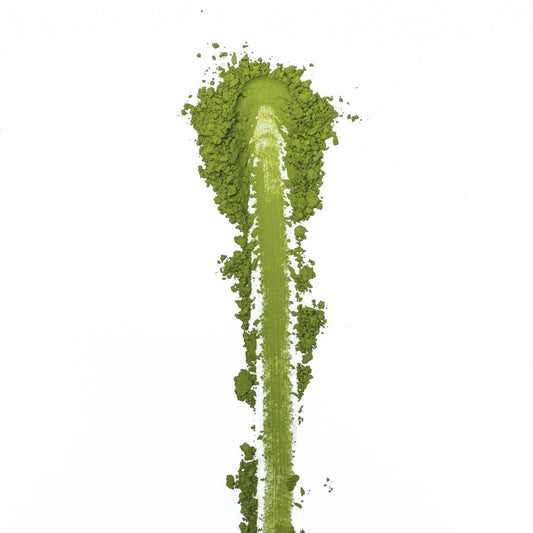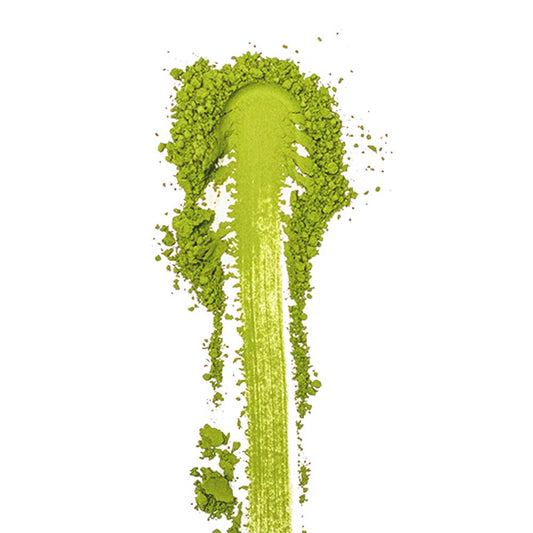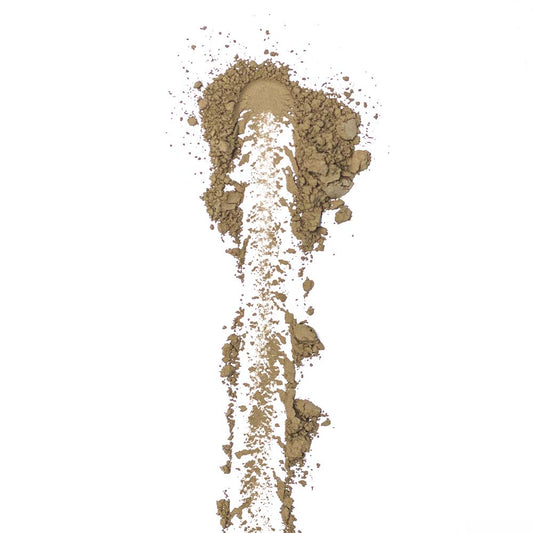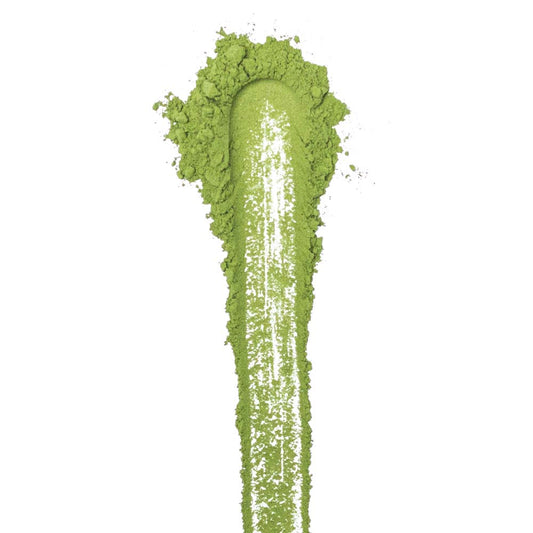Matcha Tea
Matcha is a green tea powder from Japan. It is made from Japanese green tea leaves ground into a fine powder that is then whisked into water or milk to make a tea. Read more...
Shop 4 Rare Tea Co Matcha Tea Products
-
Japanese Ceremonial Latte Matcha
5 reviewsRegular price From £9.49Regular price£0.00 £0.76 per cup -
Japanese Ceremonial Matcha
8 reviewsRegular price £21.99Regular price£0.00 £1.76 per cup -
Japanese Hojicha Toasted Matcha
1 reviewRegular price From £6.99Regular price£0.00 £0.56 per cup£0.00Sale price From £6.99 -
Japanese GenMatcha
Regular price From £10.49Regular price£0.00 £0.84 per cup£0.00Sale price From £10.49
True matcha is made from tea bushes that are shaded before harvesting. The partial shade increases the chlorophyll and amino acids, including L-theanine, which gives matcha tea its unique and complex flavour. These compounds also have antioxidants that add health benefits as well as concentration and mood-enhancing qualities that have been enjoyed by Buddhist monks for millennia.
At Rare Tea Company, we purchase only organically farmed, sustainable matcha from the remote region of Kagoshima, Japan. Our matcha tea is free from any industrial chemicals, including pesticides and herbicides. It is remarkably rare to find organic top grade matcha powder, and it took us decades of travel through Japan to source.
Matcha powder can be used as an ingredient in matcha cakes or pastries, cold infused as iced tea, whisked into cold milk to make an iced matcha latte or whipped in hot milk to make a creamy matcha latte. As with all tea, the highest quality matcha results in the best taste. We hope you will enjoy organic matcha not just for your well-being, but because it is delicious.
What is matcha?
Matcha tea is a green tea (Camelia sinensis) from Japan that has been ground into a green tea powder. The tea leaves are de-veined and de-stemmed before being finely ground. Because this tea comes as a powder, matcha is best made using a loose leaf tea, never by way of a matcha teabag. It is far more delicious whisked into a suspension in water or milk than the pale substitute made with a soggy bag.
Matcha has a long history of being drunk as part of a tea ceremony or "chanoyu" in Japan and makes for a calming, yet meditative ritual.
Matcha powder grades explained
Matcha tea can be sorted into different 'grades' or 'qualities'. We prefer to refer to grades of tea rather than quality, because even the lower grade of matcha available to buy from Rare Tea is of a high quality. Higher grades are crafted from the most precious and tender leaves to get the best flavours. Ceremonial grade matcha is the highest grade and contains marvelous subtleties of flavour. Ceremonial matcha is best enjoyed on its own, whisked into hot water or as a cold infused iced tea. Lower grades of tea are particularly good for combining with milk for matcha lattes or used in recipes for pastries and cakes. The lowest grades are often called culinary matcha, used as a cooking ingredient.
It is worth choosing a higher grade of tea for a less astringent taste if you are drinking it without milk or added sweetness.
How to prepare matcha
Matcha can be made into a hot drink, drunk as an iced tea/cold brew or added to a juice or smoothie. Whilst you can make matcha without any special teaware (even adding a teaspoon into the blender with your green juice), using a matcha bowl and matcha whisk is still the best method for suspending the fine powder in your drink.
To make hot matcha, start by adding about 2g (0.1oz) of matcha to a matcha bowl with a small quantity of cold water (about 10ml [0.3oz]). You can then whisk to a smooth consistency - traditionally with a bamboo whisk (chasen). Top up with another 60ml (2oz) of hot water (we recommend between 70°C [158°F] and 80°C [176°F]) before whisking vigorously in an 'M' or 'W' shape, until a fine foam is created.
For a hot or iced matcha latte, start by making a fine paste with a small volume of cold water, then top it up with ice-cold or hot foamed milk. If you don't have a milk frother, you can just add the milk and whisk with a chasen to a light foam.
Making matcha iced tea is best done as a cold infusion. Weigh and sieve 5g (0.2oz) of matcha into a bowl and add a small amount of cold water to allow you to whisk it to a smooth paste. Once the paste is free from lumps, add a little more water and pour into a bottle. Top the bottle up to 1 litre (35oz) of cold water, seal and shake. You can drink your iced matcha tea right away, but for the best flavour, we recommend refrigerating for 15 minutes before drinking. It will last up to 3 days in the fridge.
Caffeine in matcha Japanese tea
Matcha tea, like all true tea, naturally contains caffeine. Because you consume the whole leaf, you do consume more caffeine when drinking matcha than other teas which are made from an infusion of the leaf. Measuring the caffeine content in tea is incredibly difficult because it can vary greatly from harvest to harvest and in the many variables when making a cup of tea.
Matcha does provide an energy boost, but the combination of relaxation from L-theanine with the energizing caffeine means it is less likely to give you the stress jitters that are sometimes experienced with coffee. If you find you enjoy swapping your coffee for matcha tea, you can now get regular orders with a matcha subscription.
What region is your matcha tea grown in?
Matcha comes from many regions across Japan and is now widely made in China to fuel a growing market. We source our matcha from the remote forest region of Kagoshima where it is grown under strict organic farming principles. The vast range and price of matcha available in shops, stores and for online delivery is widely determined by where and how it is made. Look for matcha made with care, responsibility and traceability rather than just a brand name. The highest price does not determine the best matcha. But the time, labour and skill needed mean it is impossible to make great matcha cheaply.
Where was matcha first created?
Powdered tea was first created in China, but the custom was abandoned long ago, in favour of leaf tea. It has now returned to China, though mostly for export.
How to ensure your matcha is authentic?
Look for traceability. Can your matcha be traced back to a specific farm? If not, it might well be a random green tea sold under the name of matcha for the highest profit rather than the best taste.












